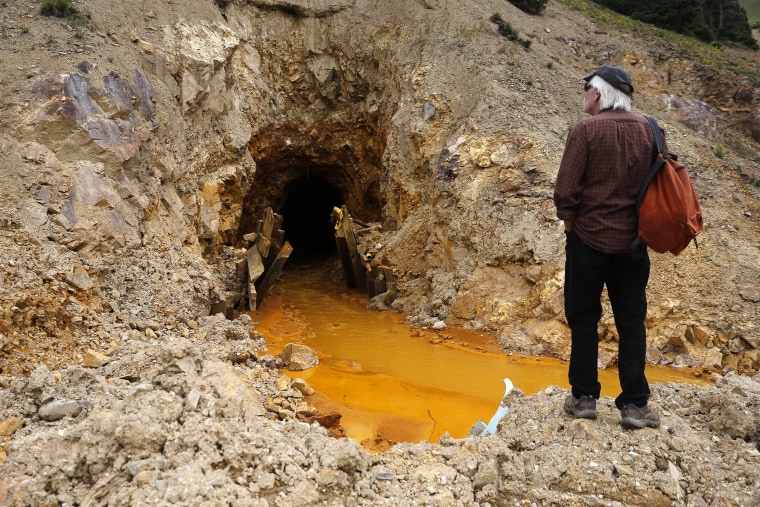Last Wednesday, Environmental Protection Agency workers cleaning up a defunct gold mine in southwestern Colorado mistakenly unleashed a torrent of toxic wastewater, sending the chemical-laden plume into the Animas River, turning it bright yellow and forcing officials to close it off.
About three millions gallons of the polluted sludge churned into the river, moving downstream to the town of Durango, on to New Mexico and toward Lake Powell in Utah, raising all sorts of questions about the immediate and long-term impact on the drinking water, wildlife and the local economy.
This is what is known so far:
What was in the toxic wastewater?
The plume contained concentrated levels of heavy metals, including lead, iron, zinc and manganese, as well as arsenic. It was the iron that turned the river the color of mustard.
How polluted is the river now?
State and federal officials say that the spike of toxins lasted about eight hours. Since then, the EPA has built four collection ponds at the mine site, where it is treating the water in order to reduce acidity levels and remove dissolved metals. Officials say the pollutants have now dissipated to the point that the river near the spill point is returning to normal water-quality levels — and is regaining its greenish-blue hue. But the contaminants will eventually settle in the river bed, and could be kicked back up during rainstorms.
How long will the pollution stick around?
Jeff Curtis, a University of British Columbia scientist and water quality expert, said he expected two waves of toxins to move downstream from the spill. The first wave comprises water-soluble pollutants, including arsenic and cadmium, freely flowing with the river’s current. The second wave of less soluble materials, including lead, will settle in river basin sediment and be churned up by later rainstorms.
That means that the full impact of the spill will take years, perhaps decades to unfold, as the toxins continue to move through the ecosystem. Fish will bear the brunt of the contamination, poisons slowly accumulating in their bodies.
The effect on humans will take much longer to measure, Curtis said.
What's been the impact on drinking water?
Officials in Durango, the first town downstream from the spill, moved quickly to shut off its intake valve from the Animas. Tap water there is considered safe to drink, but because the town is now relying on the Florida River for its supply, officials are urging people to conserve. Residents and farmers who rely on wells were switched to alternative sources.
Seven water systems in Colorado and New Mexico may also be affected, as the river carries the contaminants closer to the Colorado River, which feeds much of the West.

What about wildlife?
Officials are still trying to figure out how the spill has affected animals and fish. Tests have not turned up any widespread deaths of fish, or of insects that the fish eat.
When will the Animas River reopen?
The EPA said it did not anticipate making any decision about making the river available for public use until at least Aug. 17.
Has the leak at the mine itself been stopped?
Contaminated runoff is still flowing from the abandoned Gold King Mine, the Durango Herald newspaper reported.
How many of these mines are out there?
The Gold King Mine is one of thousands of mines that drove the local economy until the early-20th century. All are now closed. Some are now tourist attractions. All maintain a toxic legacy, as groundwater flows through the old tunnels and picks up pollutants.
How did the spill happen?
Locals have been debating how to stem the flow of hazardous chemicals from the mines, but resisted allowing the EPA to declare the mines a federal Superfund site, fearing the impact on the economy. Instead, the EPA decided on a softer approach: go into the worst of the abandoned mines, measure the level of pollution, treat the sludge and figure out whether more remediation was necessary. That's what an EPA crew was doing at Gold King Mine on Aug. 5, when it accidentally broke through a mound of material blocking the tunnel, letting loose the toxic plume.
Who’s paying for the cleanup?
The details are far from clear. But it's assumed that the EPA will end up the focus of millions of dollars in claims. In the short term, federal and state officials are shouldering the immediate costs of responding to the spill.
